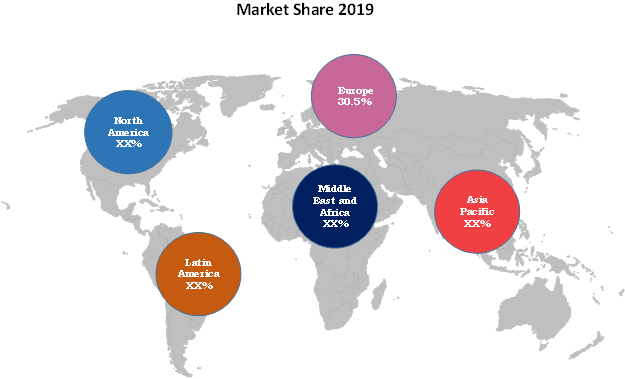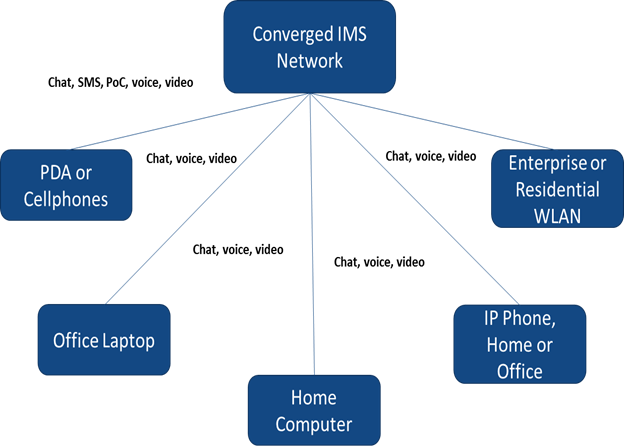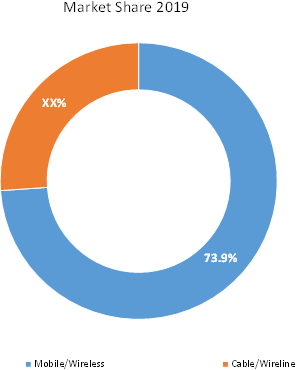Market Overview
The IP multimedia subsystem or also referred to IP multimedia core network subsystem (IMS) is a standards-based architectural framework for delivering multimedia communications services including text messages, video, and audio over IP networks. It is used by wired and wireless communication providers to enable real-time based applications. IMS is an IP multimedia and telephony network that functions on standardized 3GPP and 3GPP2. Originally, IMS was designed by the wireless the 3rd Generation Partnership Project (3GPP) to standardize the implementation of next-generation mobile networks. IMS services include online gaming, video and audio conferencing, instant messaging, VoIP calling, video on demand, push to talk, and HD voice calls.
The global IP multimedia subsystem market was accounted for US$ 20,437.7 Mn in terms of value in 2019 and is expected to grow at CAGR of 14.7% for the period 2019-2027.
Market Dynamics- Drivers
IP multimedia subsystem (IMS) provides single, session control feature, which is common to all services and applications-based on session initiation protocol (SIP). When the IMS is used, it enables the user to add new services by installing an application server for those services. Many organizations are adopting IMS services since it enables users to gain access to all their services through a single IMS registration. This, in turn, helps in cost and time saving and enhances productivity of the user. Therefore, growing adoption of shared infrastructure is expected to drive the market growth over the forecast period.
IMS allows users to access information, applications, and services that are available through the Internet. The connectivity of these services provides a substantial increase in the number of potential sources for multimedia sessions. Moreover, this enhances the capability of IMS users to establish IP multimedia sessions with non-IMS and with existing circuit-switched systems such as public switched telephone network (PSTN) and cellular networks. IMS provides support to QoS for IP multimedia session at the time of establishment and during a session by operator or user. Furthermore, it also helps in end-to-end QoS for voice communication. Thus, these factors are expected to propel the global IP multimedia subsystem market.
Europe region dominated the global IP Multimedia Subsystem Market in 2019, accounting for 30.5% share in terms of value, followed by Asia Pacific, North America, Middle East and Africa and Latin America.

To learn more about this report, Download Free Sample
Source: Coherent Market Insights
Market Dynamics- Restraints
The use of the internet increases the risk of cyber-attacks and easy data hacking, thereby posing major threat to internal security systems. As a result of this, many enterprises are reluctant to use internet-based IMS services. These enterprises are expecting authentication into these services, in order to ensure appropriate level of protection with strong multifactor security options. Moreover, a number of IMS providers are providing IMS services without adequate security measures, which is letting cybercriminals access such internet-based services easily and get access to highly confidential information. Hence, these factors are expected to hamper growth of the market in the near future.
3G and 4G internet services are being adopted at a slow rate due to high cost of spectrum, lack of supporting infrastructure, and technical issues, especially in emerging regions such as Africa and Latin America. As a result of this, there is low adoption of internet-based multimedia systems. Furthermore, in emerging regions such as MEA and Asia Pacific, network operators are not deploying IMS services due to lack of finance, high-cost spectrum, slow network connectivity, and low subscriber base. Hence, these factors are expected to hinder the global IP multimedia subsystem market growth over the forecast period.
Market Opportunities
Rising adoption of wireless devices such as laptops, IP Multimedia Subsystems, and smartphones among individuals and enterprises is expected to boost the demand for IMS services. Wireless packet-switched or VoIP multimedia components are evolving significantly and features such as spectrum and infrastructure competence and end-to-end service quality have also improved. Advent of IMS within wireless components enables operators to implement real-time based VoIP services as a part of IMS architecture. Moreover, it helps operators get quick notification for fixed mobile conjunction without changing current architecture. IP-based IMS services are gaining significant traction, owing to no roaming issues, no bandwidth limitations, and robust capacity of terminals to drive advanced applications.
IMS services are allowing devices such as laptops and smartphones to access services through various networks such as broadband, cellular, and Wi-Fi. Furthermore, many individuals are using multimedia applications to enhance their communications. IMS also allows users services such as instant messaging push-to-talk, multimedia conferencing, and other services with maintaining quality of services without increasing cost.

To learn more about this report, Download Free Sample
Source: Coherent Market Insights
Market Trends
Significant increase in the use of internet technology
Western European countries such as Germany are one of the largest markets for the telecommunication industry. Network operators and IMS solution providers in Germany are providing Internet-based multimedia services to customers. In the recent past, IMS has emerged as a preferred method for transferring core mobile operator services due to its flexible services, cost-effective services and support for IP services over any access medium. Furthermore, increasing use of internet has augmented internet-based communications such as VoLTE, ViLTE, VoWiFi, and RCS due to open industry standards for IP-based calling, messaging, and file and video sharing services are generically based on IMS technology.
High video bandwidth consumption is posing a major challenge for IMS providers
In Eastern Europe, high usage of video-based applications of IMS in countries such as Russia and Poland is creating a challenge for network operators. In these countries, the use of multimedia applications, typically video or video calling applications, is relatively high among users and has increased video bandwidth consumption significantly. This is also encouraging network operators to increase network capacity, which is resulting in increased costs for operators.
Value Chain Analysis

To learn more about this report, Download Free Sample
Segment information:
In global IP Multimedia Subsystem Market, by mode of communication, Mobile/Wireless sub-segment dominated the global market in 2019, accounting for 73.9% share in terms of value, followed by Cable/Wireline.

To learn more about this report, Download Free Sample
Source: Coherent Market Insights
Competitive Section
Key players operating in the global IP multimedia subsystem market are Ericsson Inc., Nokia Corporation, Emirates Integrated Telecommunications Company PJSC (DU), Cirpack SAS, Emirates Telecommunication Group Company PJSC (Etisalat), Huawei Technologies Co. Ltd, MTN Irancell telecommunications Service Company, Italtel S.p.A., Cisco Systems, Inc., ZTE Corporation, IBM Corporation, and Mitel Networks Corporation.
Key Developments
Share
Share
Missing comfort of reading report in your local language? Find your preferred language :
Transform your Strategy with Exclusive Trending Reports :
Frequently Asked Questions
Select a License Type
Joining thousands of companies around the world committed to making the Excellent Business Solutions.
View All Our Clients